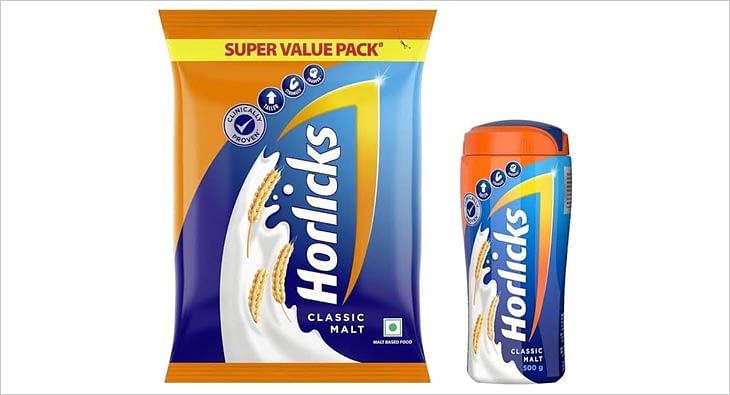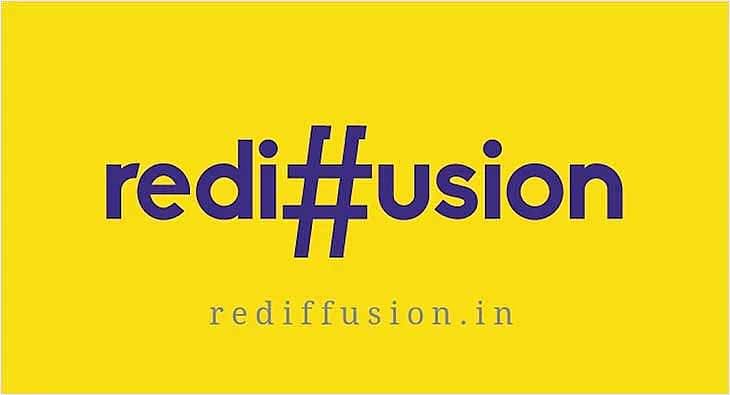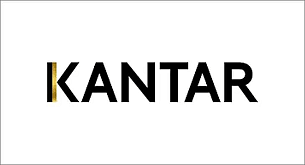Winning trust during the pandemic: A guide for brands
Guest Column: Rahul Jain, Creative Strategist at Sideways, writes how brands can take the right marketing decisions to ensure a quick demand recovery once the world moves into the ‘new normal’

Let’s start with a simple experiment. Make a list of all the things you have bought in the last few weeks on your grocery runs. Now, think of things you didn't buy because your preferred brand wasn’t available. Even if that number is low, it is considerably higher than the pre-lockdown phase.
Due to the crisis, brand loyalty has taken a huge hit. The cause for that is a supply shortage leaving customers with no other option but to try new brands. A latest McKinsey study shows 65% of consumers have already tried new or alternate brands. This clearly gets reflected in the fall of share of the top 3 brands in Hand Sanitizer category from 85% to 39% in a span of 2 months. Same goes for packaged rice, 72% to 64% for the top three brands. One might argue that this is a temporary phenomenon, but we believe forced trials can lead to preferences for cheaper and local private labels, especially in categories with barely any differentiation.
As the government gradually lifts the lockdown, brand preferences will shift from availability to trust again. 79% Indian respondents to the research said, brand's response to this pandemic will influence their likelihood to buy that brand in the future whereas 73% said they were likely to lose their existing trust on any brand that seems to put profit over people. Be it a challenger brand or a leader, this pandemic will have repercussions in the long-term image of the business.
The trust gap between the market leaders and challenger or regional brands is the lowest at this point. And the crisis brings with it an opportunity to redefine and win the trust of the consumers. But unlike in times of normalcy, here the customer expectations from brands are different. Edelman’s Trust Barometer Special report indicates as many as 60% respondents in India said they will stop using a brand if it didn’t act appropriately during a crisis. What is appropriate during this crisis and how can brands take the right marketing decisions to ensure a quick demand recovery once the world moves into the ‘new normal’?
- Listen carefully – Be up to date with what people are saying about your brand, category and in general. Even though you are interacting with only your audience, you have to keep everyone in mind. Any communication or action that doesn’t align with the current directives or are tone-deaf to the situation is unforgivable.
- Act first, communicate later. Now more than ever, it is the intent that matters. We have all received the ‘We are with you’ emails from brands. Communication for the sake of it, is not going to cut it. This is the time for action that shows genuine concern and effort from the brands to reassure and build confidence. Piling conversation without value does more harm than good for your brand image.
- Innovate solutions that help meet the challenges of this pandemic. This leads to collaboration with the Government, with NGOs or even other corporate entities and using your strengths to fight the crisis. But pushing or making new products that aren’t related to the challenges can be seen as opportunistic and punished by the consumers.
- Use media for good. People expect brands to serve as a reliable information source as well. From McDonald's Brazil tweaking their iconic logo to promote social distancing to TikTok using its voice against spreading misinformation, there is a real opportunity to be creative and helpful.
- Not all heroes wear capes. Keep it real – Brands do not need to shed the image they have created and earned and all start acting the same way – a caregiver. It is both unreal and unsettling. We believe as long as you are being genuine and caring, there is no need to lose your brand tone and voice.
While most believe brands should refrain from using humour or lightheartedness, we think it’s the need of the hour. Bring a smile to the faces and reassure the public with a sense of normalcy. Burger King played their part in keeping kids busy at home during the lockdown by offering free Whoppers for solving maths problems.
- Charity begins at home - Protecting the financial and emotional wellbeing of their employees is being seen as a responsible act. Brands should try to explore and eliminate all other options before using the last resort of firing the employees during the crisis. Meaningful messaging will not cover up for how the brands act with their own staff during a crisis.
- Choose the medium wisely –Every brand has to walk the fine line of optimizing the resources and RoI but at the same time give it the right platform to make a strong comeback. TV and Social media have both seen a rise in engagement during the lockdown. So, let the intent (sales or image building) and target audience decide the media mix.
Disclaimer: The views expressed here are solely those of the author and do not in any way represent the views of exchange4media.com.
Read more news about Marketing News, Advertising News, PR and Corporate Communication News, Digital News, People Movement News
For more updates, be socially connected with us onInstagram, LinkedIn, Twitter, Facebook Youtube, Whatsapp & Google News
About 60% Instagram influencers in India have fake followers: Report
As per a media report, influencer marketing platform KlugKlug has found that only 2.48 million profiles out of the 8 million have ‘high-quality’ followers
Two of three Instagram influencers in India have more than 60 per cent fake followers, a report by influencer marketing platform KlugKlug shows.
This is particularly true for the beauty and fashion sector, the report noted.
Other countries that have influencers with fake followers are Brazil, the UAE and Indonesia.
As per media reports, such Instagram fake followers can be roped in for as little as Rs 10 to a high of Rs 1,000.
According to Klug Klug India, only 2.48 million profiles out of the 8 million have high-quality followers.
A number of other categories have also been buying fake followers, media reports have noted.
As per a media expert, quoted in the reports, brands are finding it difficult to identify and curb the menace of fake followers and bots.
In a recent setback for influencers the Central Consumer Protection Authority (CCPA) has said those promoting activities like gambling and betting are equally liable as the companies promoting the same.
15% consumers enhance their user experience through virtual assistants: Kantar report
According to Soumya Mohanty, Managing Director & Chief Client Officer- South Asia, Insights Division, Kantar, less than 1% of ads get tested due to lack of time
Marketing data and analytics firm Kantar has unveiled a report that studies the burgeoning AI market to dish out actionable insights for marketers. Within AI, virtual assistants are the fastest growing segment. The report noted that 15% consumers enhanced their ‘user experience through virtual assistants’. This segment is the fastest growing at 27% YoY.
According to the study, while ‘fitness’ and ‘social media’ apps are amongst the leading categories, driving AI adoption (with an average of 2.3 AI led features embedded in these applications), segments like ‘BFSI’, ‘job search’ and ‘short video’ apps are relatively slow in AI adoption, with an average of 1.2 features each. Entertainment apps, digital commerce and pharmacy apps stand somewhere in the middle with 2.0 & 1.8 AI features being adopted, respectively.
Additionally, the report said that while 90% of marketing and sales leaders think their organisations should be using AI “often”, 60% said their organisations “rarely or never” do. Speaking to exchange4media, Soumya Mohanty, Managing Director & Chief Client Officer- South Asia, Insights Division, Kantar highlighted that currently there are a lot of organisations who know that there is something called AI, but haven’t yet figured out how it could help them holistically.
“A lot of the AI just gets used for efficiency purposes, so repetitive tasks get automated,” Mohanty pointed out. Data also plays a big role in why certain organisations are struggling with how to use AI.
For instance, Mohanty explained that in segments like D2C, telecom etc. there is a lot of primary or first-party data. So being able to leverage AI also gets easier. “It's the traditional large sort of FMCG type companies where data sits in silos. You don't really have one single source of data where it's a little difficult to use the full power of AI, because the full power of AI also needs a lot of data sitting in a structure that you can use,” she added.
So, can AI help marketers have a unified view of data? No, says Mohanty. “AI does not help marketers get a unified view of data. Once you have data in a unified way, AI can help you do a lot more with that data.”
According to her, organisations today need to have good, strong data warehousing. “It needs to make sense because a lot of the silos are also because everybody owns one part of it. A lot of people have their own analytics teams internally, so there are a lot of agendas and stakeholders. And then we say data is in silos because fundamentally, when you're doing something internally, different people have different stakes in it,” Mohanty added.
Puneet Avasthi, Senior Executive Director, South Asia, Insights Division, Kantar shared that most organisations are now heavily investing in creating first-party data sets. “Companies that have first party data about their consumers and transactions or interactions that they have with the brand are going to be able to leverage that more effectively to create sharper profiles for the brand as such for the consumer and build relevant recommendations at the right moments.
Panning out she also highlighted how AI can be leveraged to enhance market research and make it more accessible, a part of which Kantar is itself involved in. “A lot of times people say that we can't test an ad because we don't have time. So less than 1% of advertising gets tested and just gets put out. Does it work when it gets put out? It is the question the audience should answer, because so many times, it backfires,” Mohanty shared. Apparently, digital particularly doesn't get tested because organisations just do a/b testing and leave it at that.
Speaking of preferred use cases of AI, Avasthi added that various businesses and brands are looking at creating an experience for the brand that is in line with the brand's architecture and progress across all touch points. “That is something that the AI engines that are working behind can ensure, that all such interactions are consistently delivered across different virtual assistants or chatbots that are available to the consumer,” he said.
The other use case, according to Avasthi, is ensuring that there is greater visibility for the brand in the digital sphere as such, through various recommendation engines, when a certain need is being looked for and to throw up the right kind of information about the brand so that the brand message is amplified in the mind of the consumers.
Among other insights from the Kantar AI report is that 88% consumers used AI based algorithms which analysed their preferences, behaviours, and interests to create personalised recommendations for tailored experiences. This segment grew at 6 % YoY. At 21%, ‘smart home automation’ is a smaller segment but growing at 25% YoY.












 Share
Share
